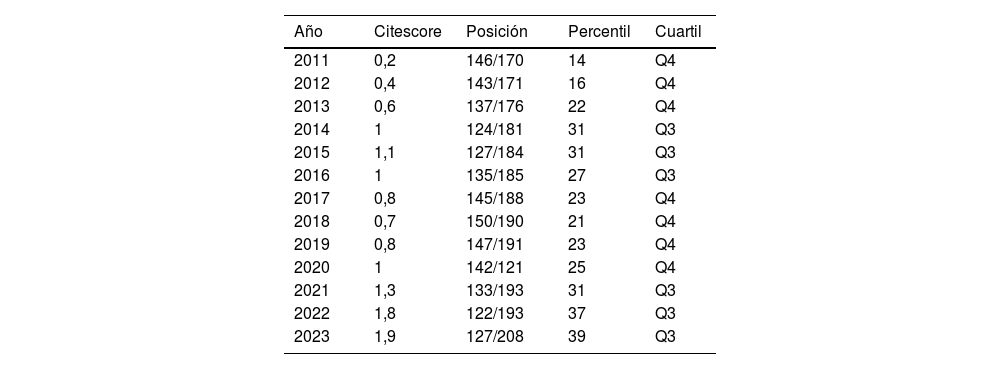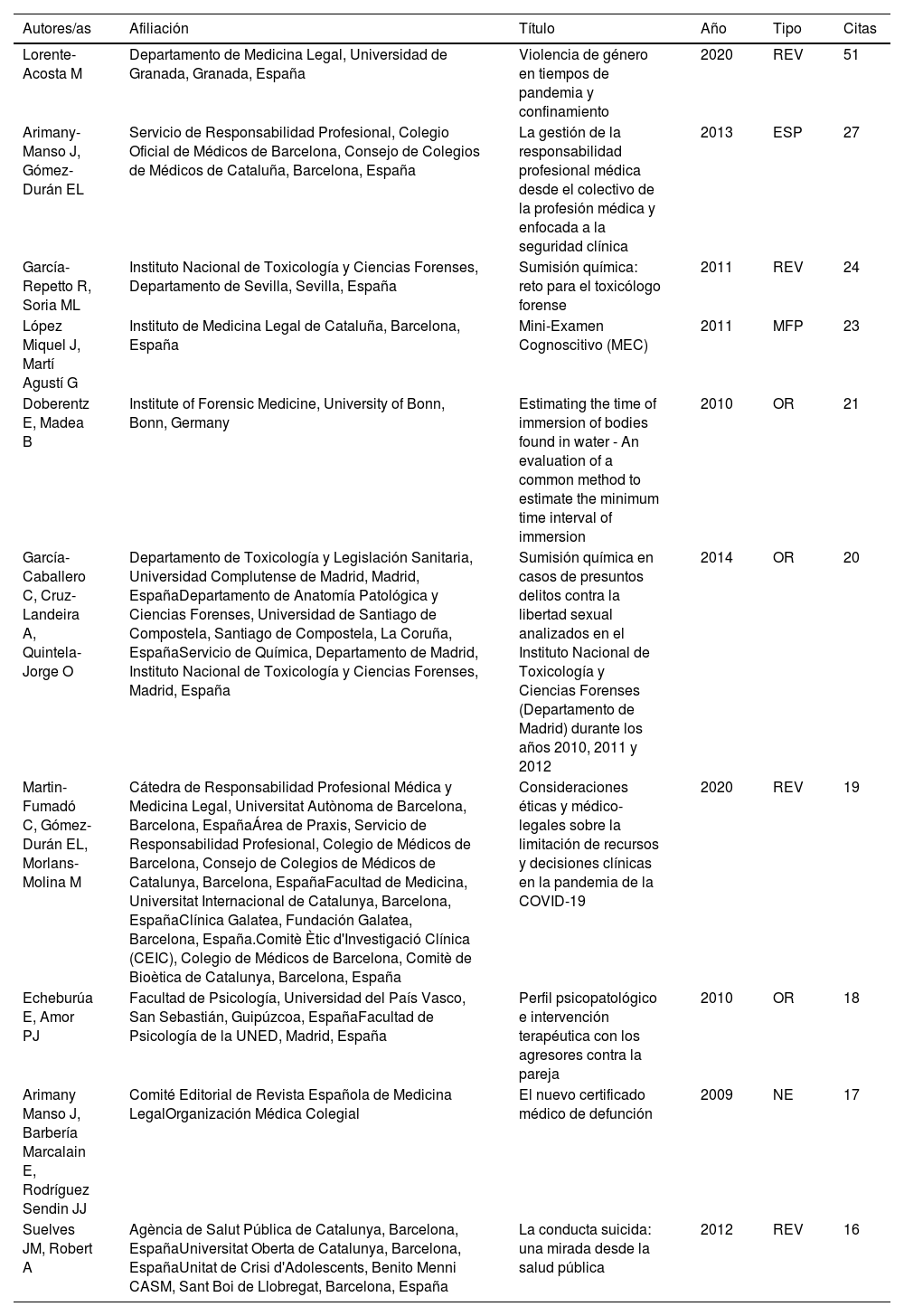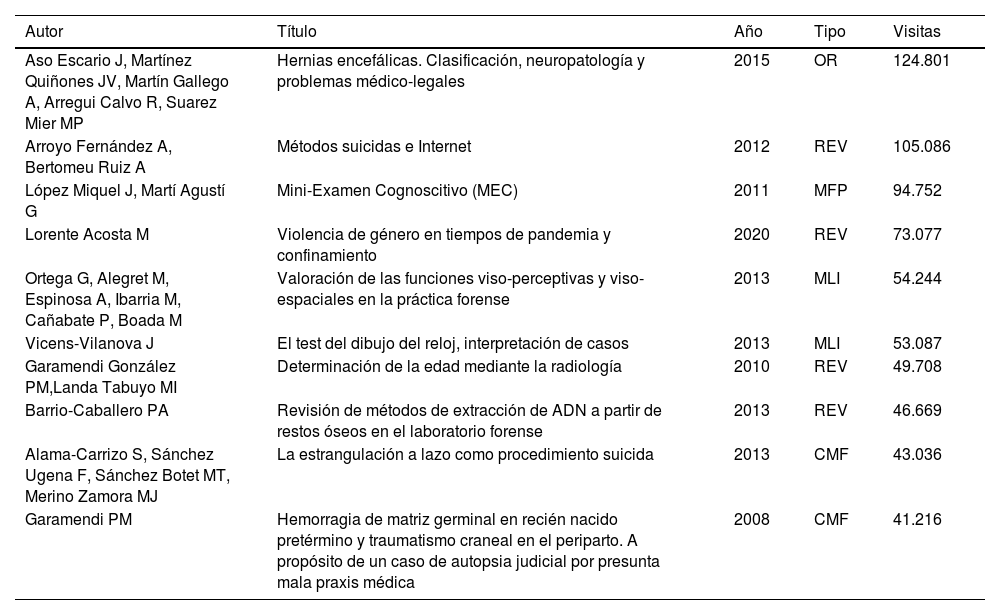analizar la cobertura y los principales indicadores bibliométricos de Revista Española de Medicina Legal (REML) en la base de datos Scopus.
Material y métodose identificó la evolución de la producción de la revista entre los años 2008 y 2024 y los indicadores de citación e impacto (número de citas, CiteScore, Scimago Journal Rank [SJR], cuartil, índice h, trabajos más citados y leídos).
Resultadosse incluyeron 515 trabajos en Scopus (27,1 de media anual) con un índice h de 15 y un porcentaje de autocitas del 21,5% para el período estudiado. El número de citas recibidas en Scopus fue de 1.510, alcanzando el pico de citas en 2022. En la categoría Pathology and Forensic Medicine, para el año 2023, REML obtuvo un índice h de 13, con un SJR de 0,217 que corresponde al tercer cuartil. En 2023 el porcentaje de autoras fue del 53,85%. Las instituciones más productivas fueron el Instituto de Medicina Legal y Ciencias Forenses de Cataluña y el Instituto Nacional de Toxicología y Ciencias Forenses. El artículo que mejores métricas obtuvo fue el relacionado con la violencia de género y el confinamiento por la pandemia por SARS-CoV-2 publicado en 2020.
Conclusionesse observa una evolución positiva de las métricas de REML durante el período estudiado. La mejora de los indicadores de la revista se vería beneficiada por su indexación en otras bases de datos internacionales.
To analyze the coverage and main bibliometric indicators of Spanish Journal of Legal Medicine (SJLM) in the Scopus database.
MethodsWe identified the evolution of the journal's production between 2008–2024 and the citation and impact indicators (number of citations, CiteScore, Scimago Journal Rank-SJR, quartile, h-index, most cited and read papers).
Results515 papers were included in Scopus (27.1 annual average) with an h-index of 15 and a self-citation rate of 21.5% for the period studied. The number of citations received in Scopus was 1,510, reaching the peak of citations in 2022. In the category Pathology and Forensic Medicine, for the year 2023, SJLM obtained an h-index of 13, with an SJR of 0.217 corresponding to the third quartile. In 2023 the percentage of female authors was 53.85%. The most productive institutions were the Institute of Legal Medicine and Forensic Sciences of Catalonia and the National Institute of Toxicology and Forensic Sciences. The article with the best metrics was the one related to gender violence and confinement due to the SARS-CoV-2 pandemic published in 2020.
ConclusionsA positive evolution of SJLM metrics is observed during the period studied. The improvement of the journal's indicators would benefit from its indexing in other international databases.










